Reciprocal Frame Structures
Reciprocal frames (RF) are a family of structures that increasingly are attracting interest from many participants in the construction industry.
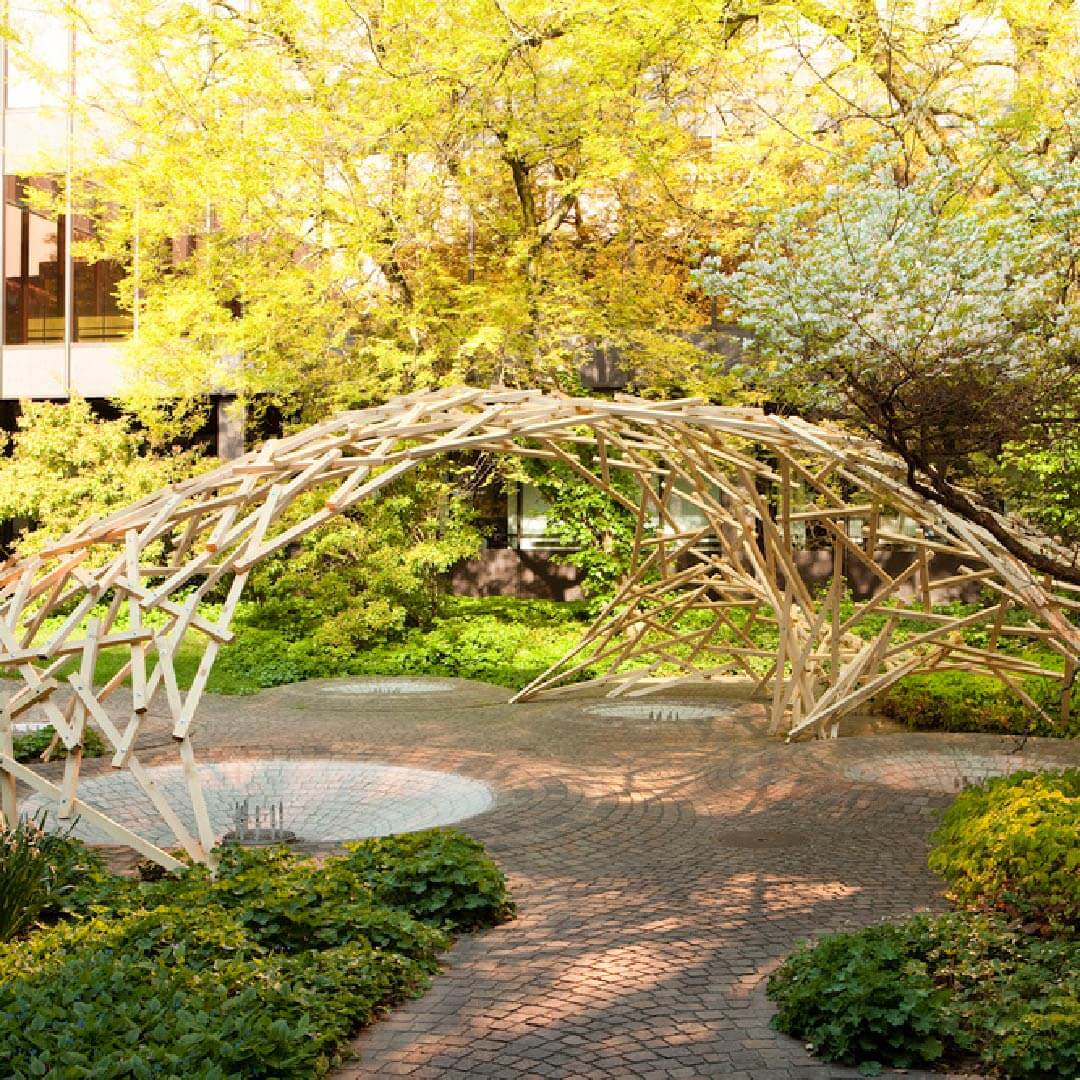 They offer architectural opportunities through their expressive form and structural advantages due to their specific configuration.
They offer architectural opportunities through their expressive form and structural advantages due to their specific configuration.
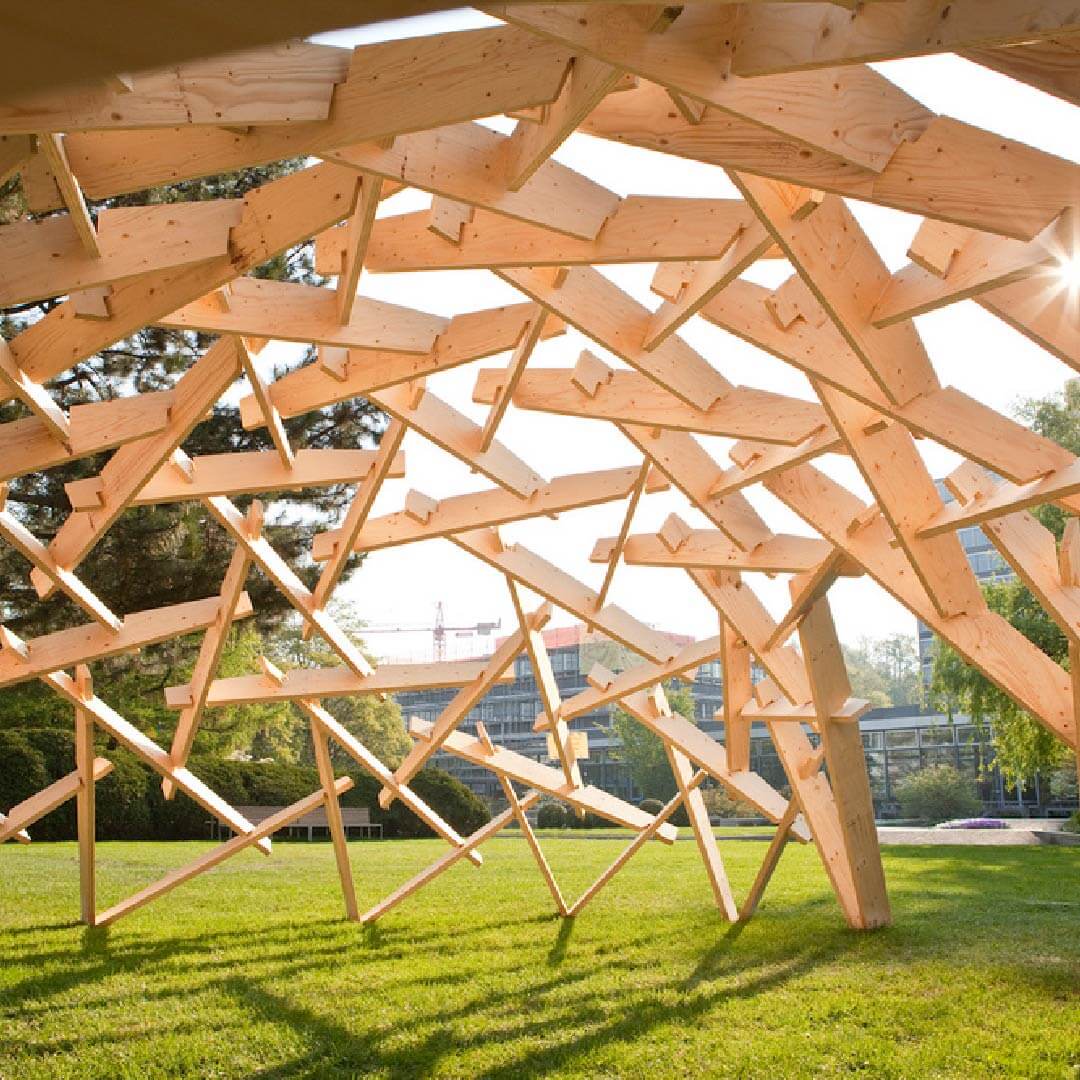
[1]
A possible definition of a reciprocal frame is a grid of linear members where each member simultaneously supports and is supported by its neighboring members.
Therefore, the members are structurally interdependent and in a structural hierarchy of equal importance.
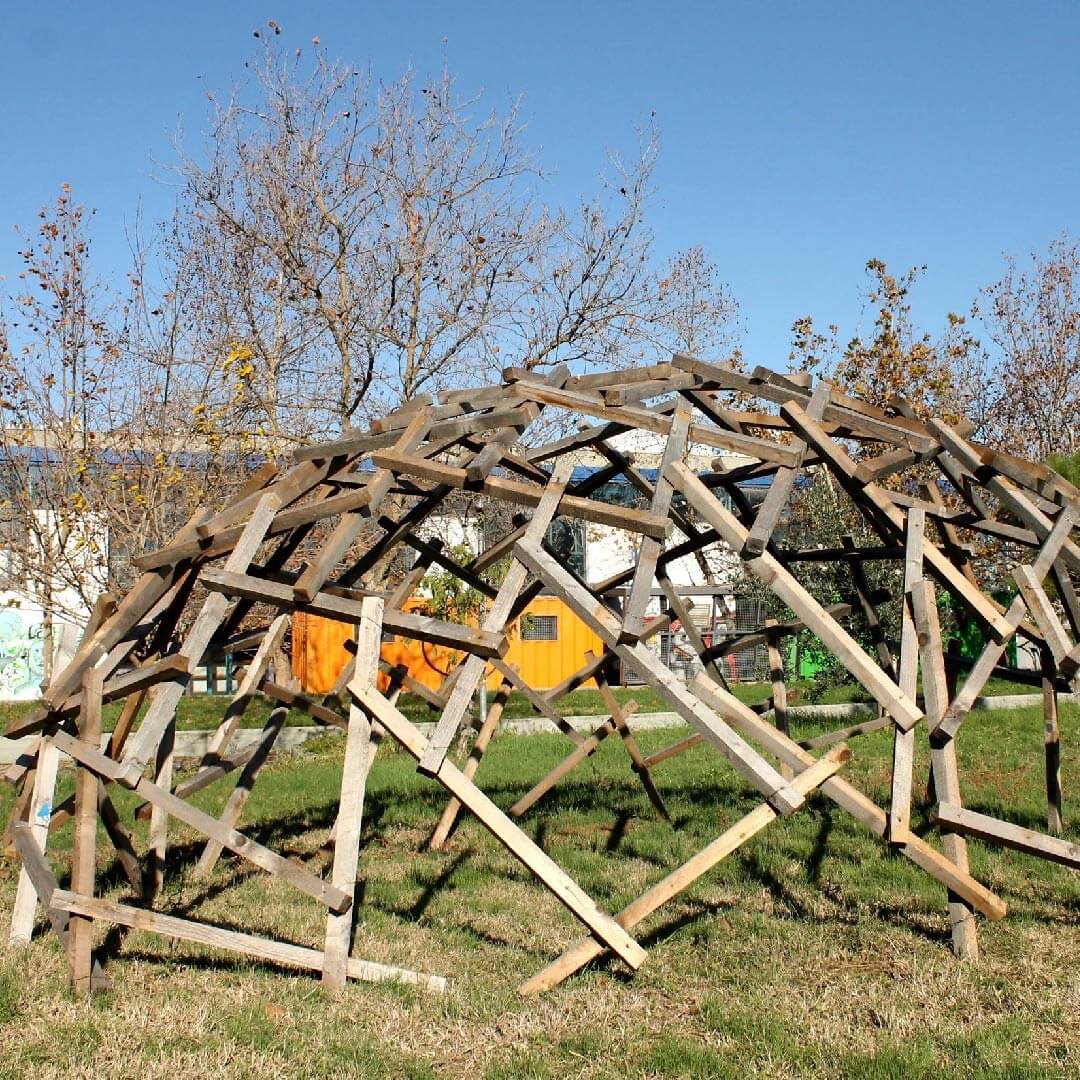 Although the basic RF configurations are typically used to enclose a regular rectangular/polygonal plan form, current built cases have also presented reciprocal frames with irregular shapes.
Although the basic RF configurations are typically used to enclose a regular rectangular/polygonal plan form, current built cases have also presented reciprocal frames with irregular shapes.
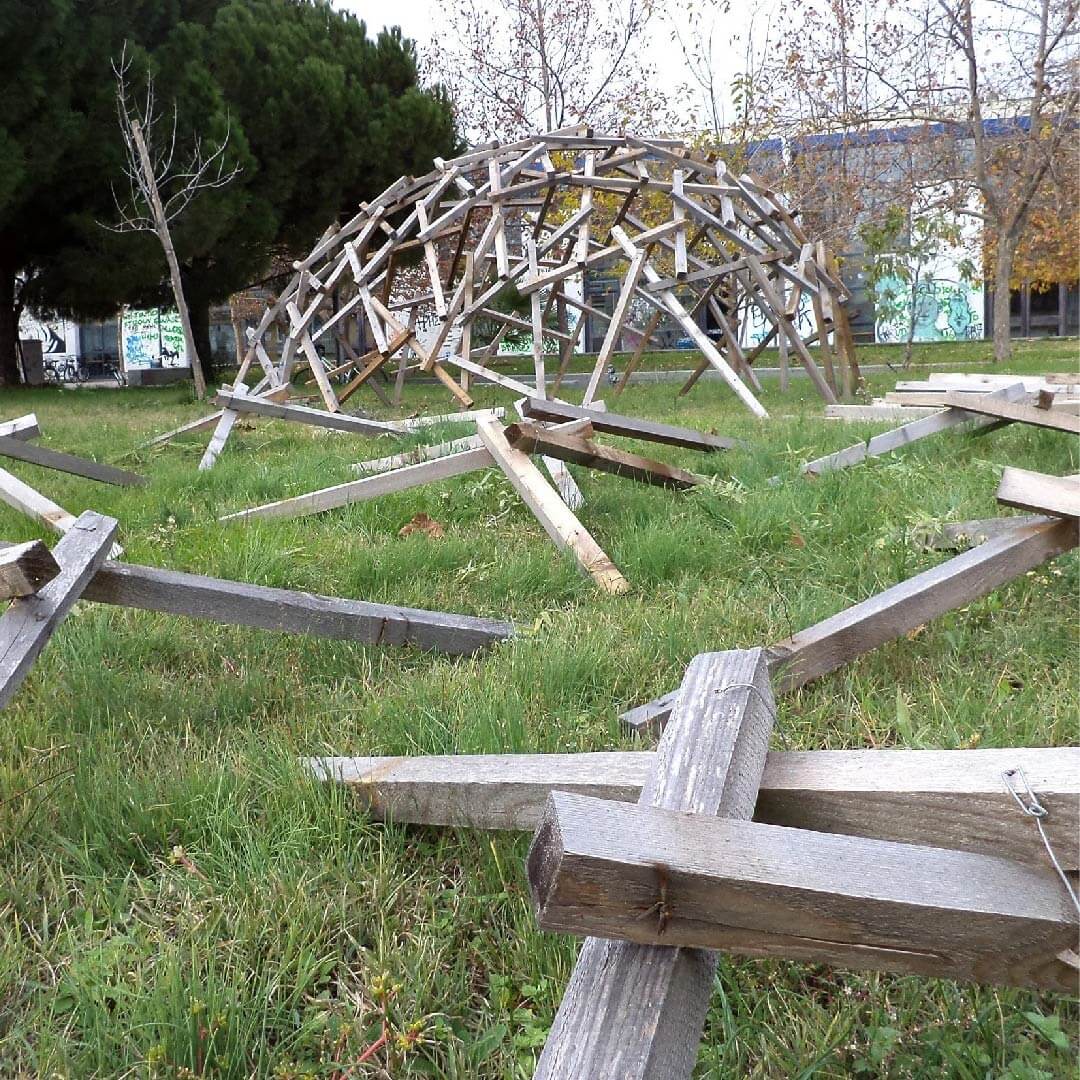 Up-to-date digital design tools enable a broad spectrum of opportunities for RFs, facilitating the design and fabrication of complex RF geometries and building typologies for diverse purposes.
Up-to-date digital design tools enable a broad spectrum of opportunities for RFs, facilitating the design and fabrication of complex RF geometries and building typologies for diverse purposes.
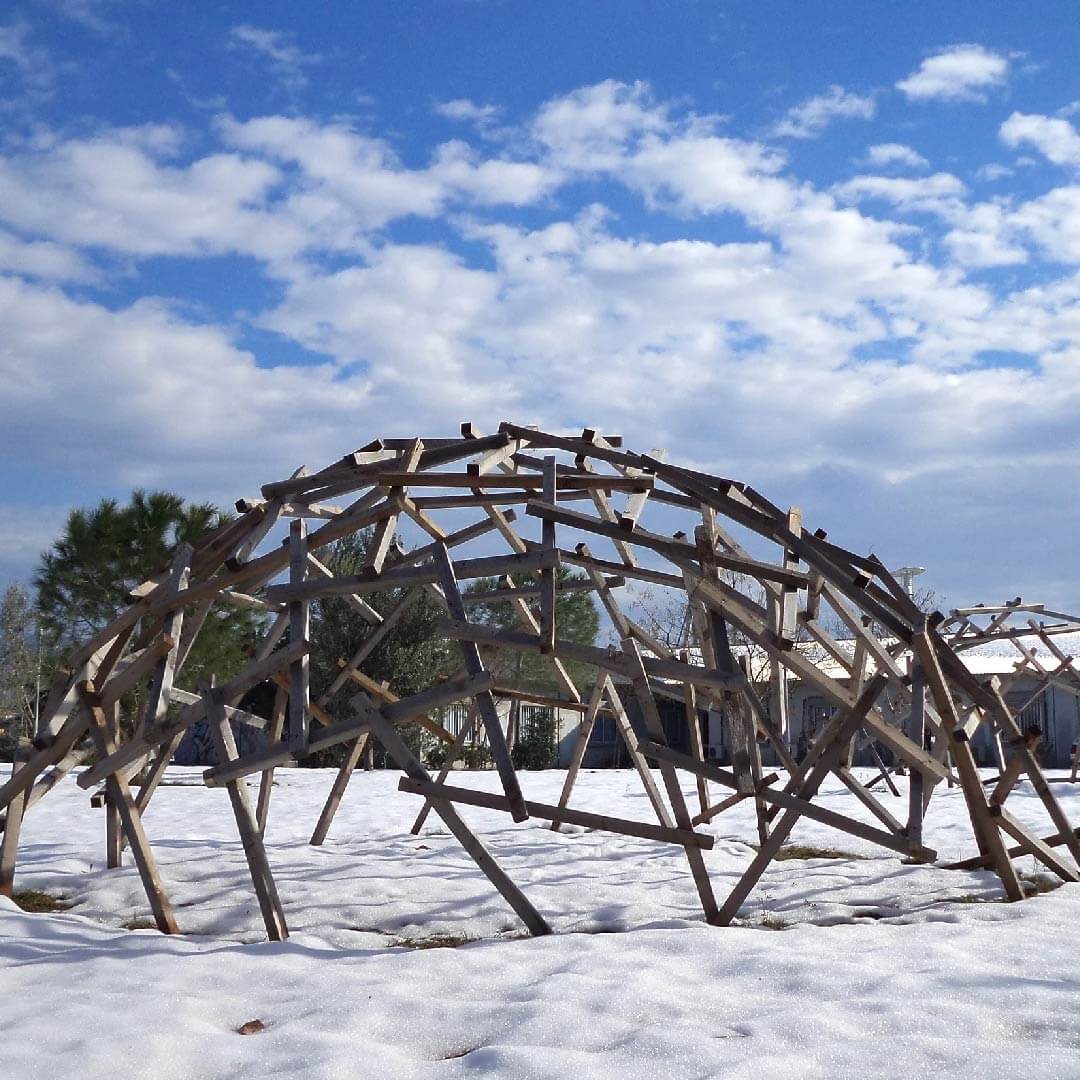
[2]
Reciprocal frames have been known for centuries, and there are numerous examples from the Middle Ages, Renaissance, and later periods from studies/drawings and built examples.
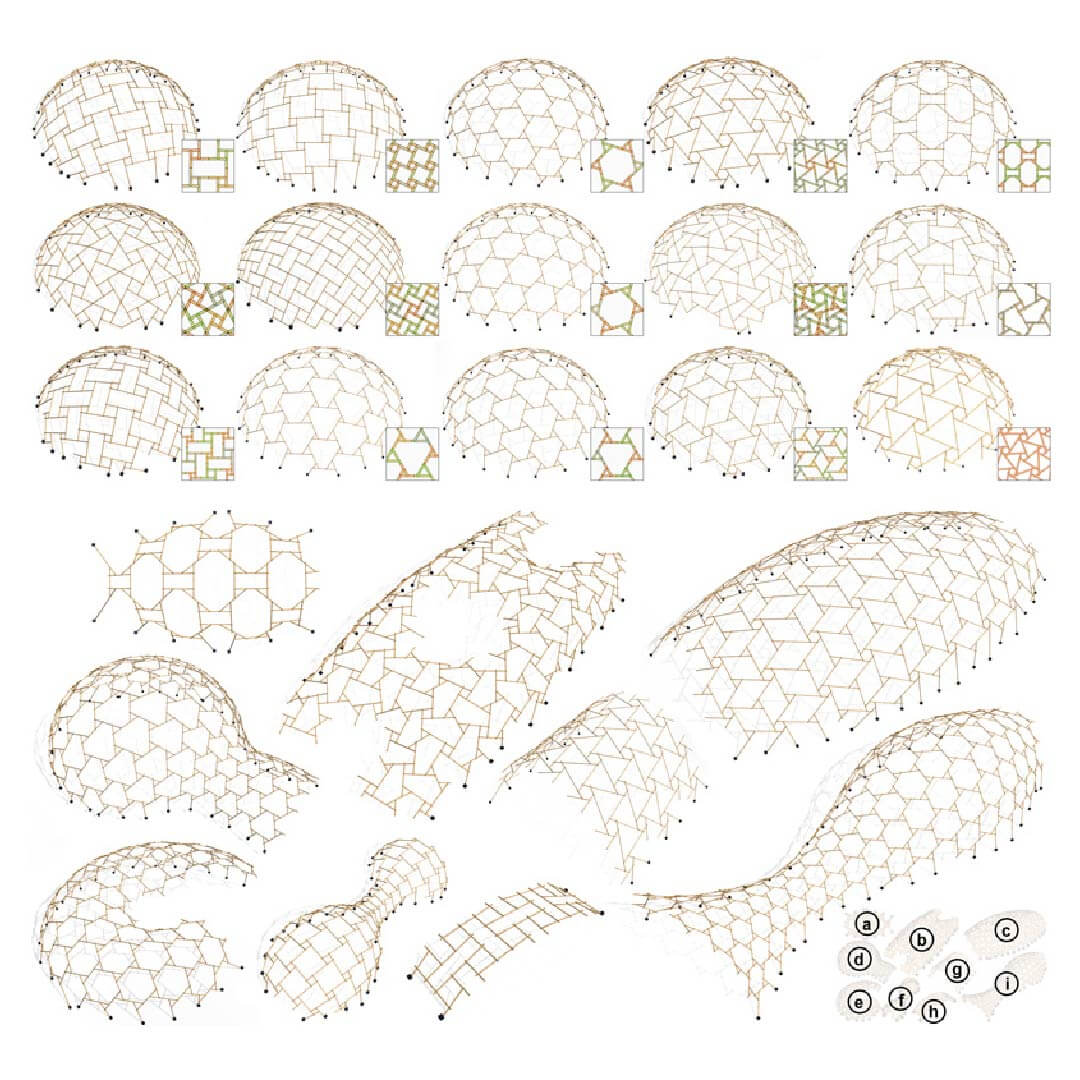 Traditionally these frames were made of wood, the most readily available linear building material. They were used in buildings and bridges for permanent and temporary structures.
Traditionally these frames were made of wood, the most readily available linear building material. They were used in buildings and bridges for permanent and temporary structures.
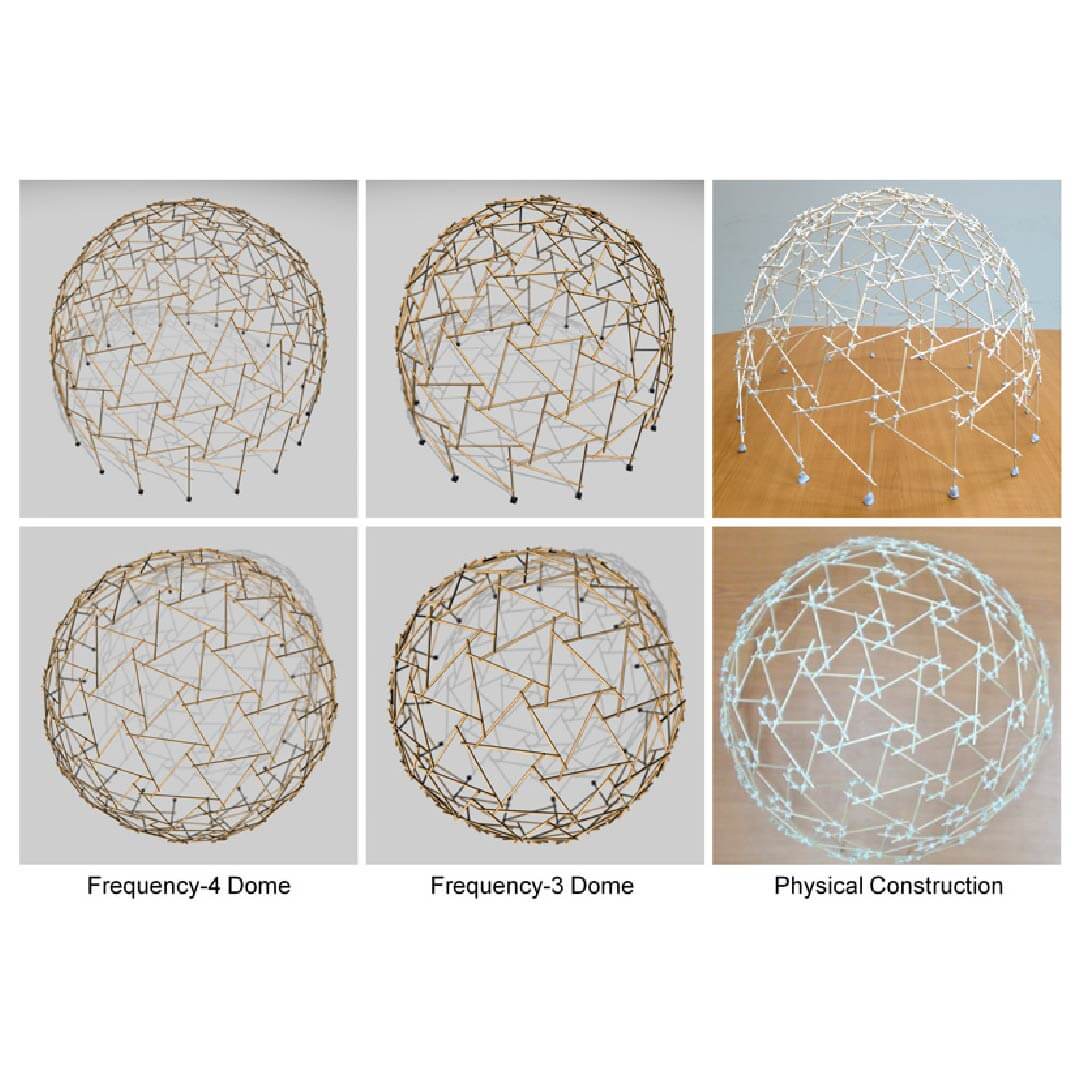
[3]
Reciprocal frames are also known under the term nexorades in some literature. The British inventor Graham Brown built a number of reciprocal frames and coined the term reciprocal frames in the 1980s.
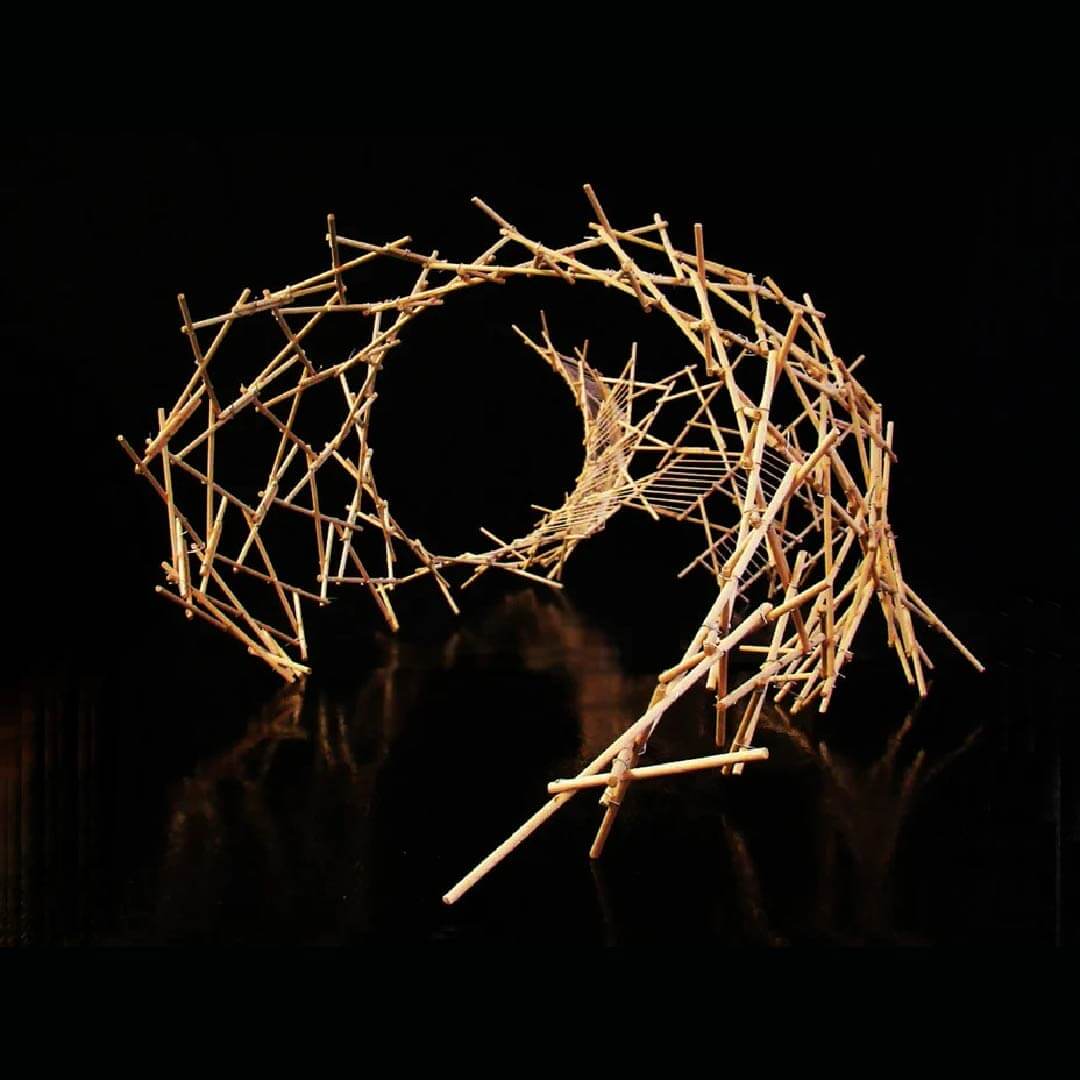
[4]
Historically they were used in flat beam systems for forming floors in covered spaces where the span exceeded the available timber lengths, spanning over circular or rectangular spaces, as illustrated by Sebastiano Serlio.
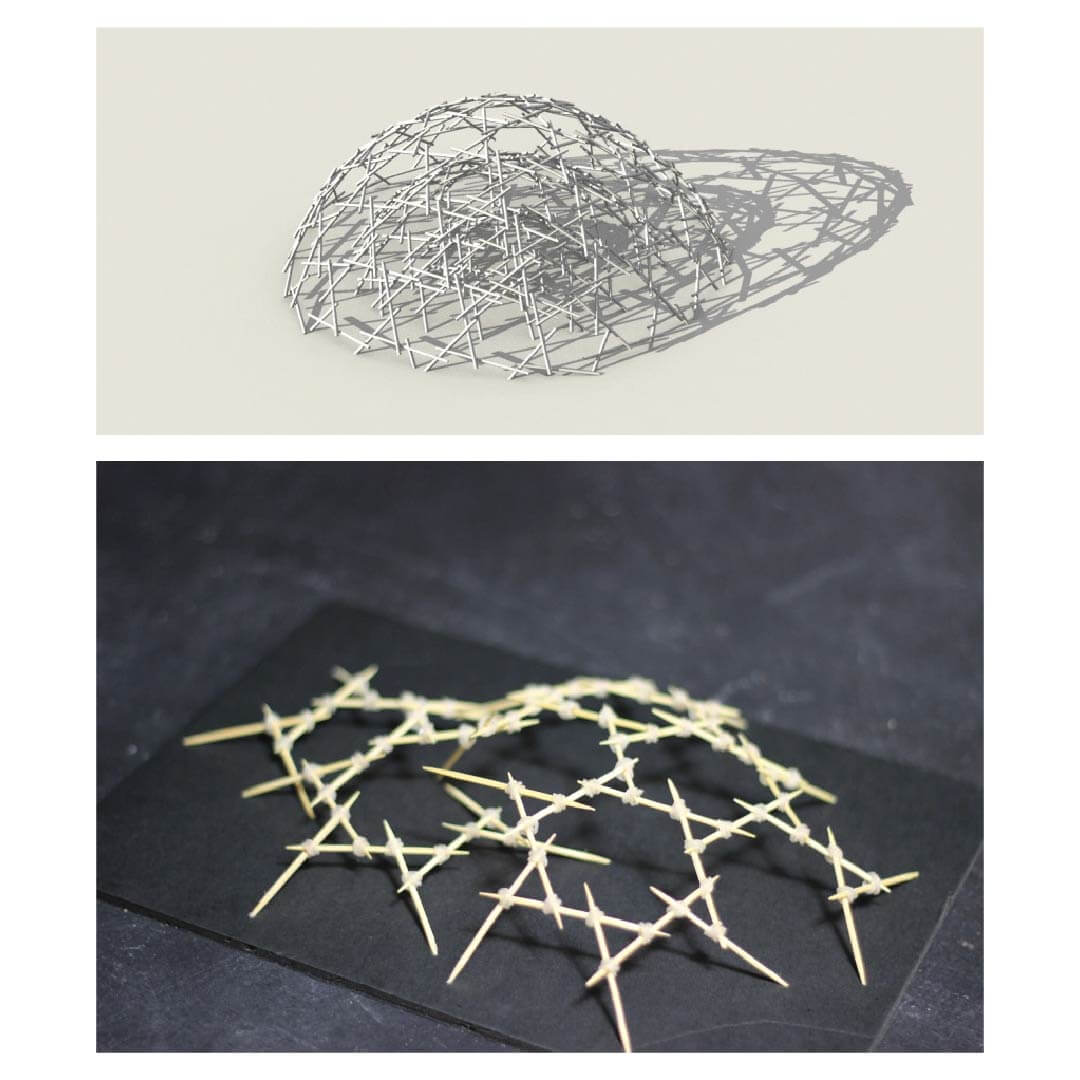 Leonardo da Vinci sketched reciprocal frames as temporary bridges using a system of timber beams to create a simple structure with relatively short timber members and simple connections, which would have been easy to construct.
Leonardo da Vinci sketched reciprocal frames as temporary bridges using a system of timber beams to create a simple structure with relatively short timber members and simple connections, which would have been easy to construct.
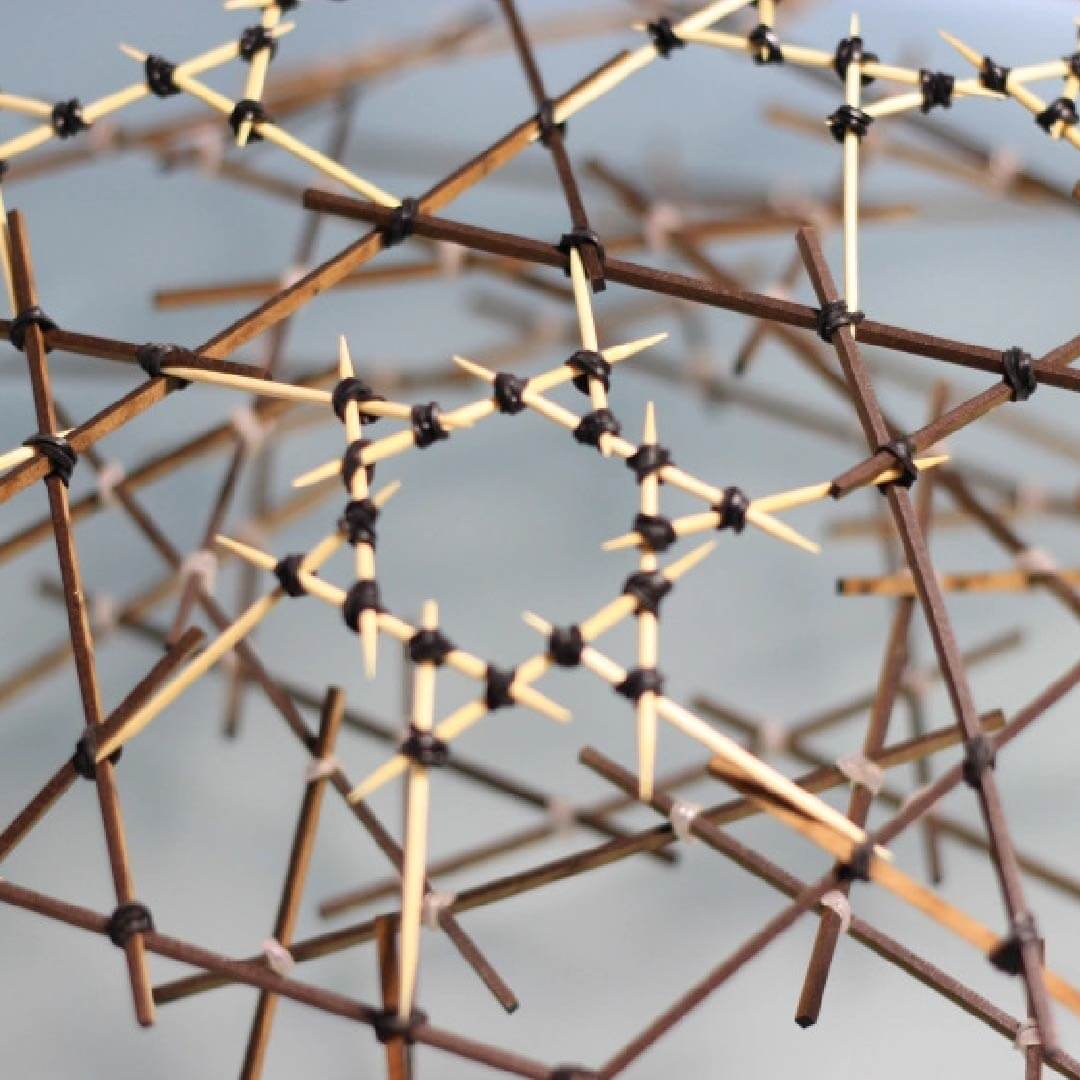
[5]
Text Source: Reciprocal Frame Structures / structuremag
Video Source:
How to design a Timber Reciprocal Frame Structure: The short computational approach / Youtube/ Tom Godthelp
Bamboo Reciprocal Tower Workshop / Youtube/ SEAD Build
Reciprocal frames SIGGRAGH 2013 / Youtube/ Daniel CohenOr
Warka Water, the story behind it / Youtube / Warka Water
Da Vinci Brücke bei Ott Haus – unglaublich! / Youtube/ OTT-Haus
모래놀이터 그늘막 다빈치다리 Building the davinci bridge sand Playground Shade / Youtube/ 행복한나무
Leonardobrücke – total anders / Youtube/ pfeilstein
ETS 5 – Reciprocal Structure Full Assembly / Youtube / Morgan Hamel de Monchenault
Warka Water towers harvest drinkable water from the air | Design | Dezeen / Youtube/ Dezeen
Digital Fabrication – Reciprocal Frame Structure / Youtube/Elena Corio
Leonardo da Vinci Bridge / Youtube/ Mark Deegan
Reciprocal Frame Structure / Youtube/ Zehra Kesgin
Reciprocal Frame Structure Canopy / Youtube / Zehra Kesgin
Refugee Tube – SchnetzerPils Architects / Youtube/ Alphabet des Lebens – Lernwerkstatt Natur
Ponte autoportante di Leonardo da Vinci / Youtube / Gianfranco Bo
https://www.youtube.com/watch?v=yqlYH1bdN7o




























Comments